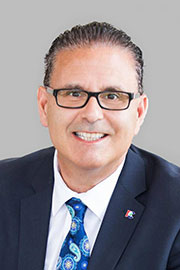- Aug/23/22 11:30:00 a.m.
I want to thank Brock for doing this petition and getting the signatures on it.
“To the Legislative Assembly of Ontario:
“Whereas as part of Ontario’s commitment to building a stronger health care workforce, the government is investing $142 million, starting in 2022-23, to recruit and retain health care workers in underserved communities, which will expand the Community Commitment Program for Nurses, up to 1,500 nurse graduates each year to receive full tuition reimbursement in exchange for committing to practise for two years in an underserved community; and
“Whereas starting in spring 2023, the government will launch the new $61-million Learn and Stay grant and applications will open for up to 2,500 eligible post-secondary students who enroll in priority programs, such as nursing, to work in underserved communities in the region where they studied after graduation. The program will provide up-front funding for tuition, books and other direct educational costs; and
“Whereas the government also proposes to make it easier and quicker for foreign-credentialed health workers to begin practising in Ontario by reducing barriers to registering with and being recognized by health regulatory colleges; and
“Whereas to address the shortage of health care professionals in Ontario, the government is investing $124.2 million over three years starting in 2022-23 to modernize clinical education for nurses, enabling publicly assisted colleges and universities to expand laboratory capacity supports and hands-on learning for students; and
“Whereas Ontario is accelerating its efforts to expand hospital capacity and build up the province’s health care workforce to help patients access the health care they need when they need it;
“Therefore we, the undersigned, petition the Legislative Assembly of Ontario as follows:
“To urge all members of the Legislative Assembly of Ontario to continue to build on the progress of hiring and recruiting health care workers.”
I fully endorse this petition, will sign it and give it to page Samreen.
- Hear!
- Rabble!
- Aug/23/22 3:10:00 p.m.
Thank you, Madam Speaker. First of all, I want to congratulate you. You look amazing in that chair.
“To the Legislative Assembly of Ontario:
“Whereas our government made a promise to hard-working Ontarians in each and every region of the province that we would have their backs and never stop working for workers; and
“Whereas under the leadership of Premier Ford and Minister McNaughton, we have brought in unprecedented reforms and support to deliver for the working people of this province; and
“Whereas our government has raised the minimum wage to $15.50 an hour to help workers and their families with the cost of living, earn bigger paycheques and save for their future; and
“Whereas we have committed to completely eliminating the provincial income tax for anyone making $50,000 or less, keeping money where it belongs, in the pockets of hard-working Ontarian workers; and
“Whereas new changes to the Employment Standards Act require employers with 25 or more employees to have a written policy about employees disconnecting from their jobs at the end of the workday to help employees spend more time with their families; and
“Whereas the government is now investing $1 billion annually in employment and training programs so that unemployed or underemployed workers can train for high-paying, in-demand, family-supporting careers; and
“Whereas we are spending an additional $114 million over three years for the skilled trades strategy, addressing the shortage of workers in the skilled trades by modernizing the system and giving Ontarians the tools they need to join this lucrative workforce; and
“Whereas we are introducing protection for digital platform workers, the first in Canada, to support workers in this economy bring home better, bigger paycheques while improving job security;
“Therefore we, the undersigned, petition the Legislative Assembly of Ontario as follows:
“To urge all members of the Legislative Assembly of Ontario to deliver on the commitment made to the people of Ontario by working for workers.”
I fully support this petition, and I’ll give it to page Elya.
- Hear!
- Rabble!
- Aug/23/22 3:10:00 p.m.
I want to thank Joanne O’Connor and other friends at 507 Riverdale Avenue in Ottawa Centre for helping me sign up a lot of these petitions that read:
“The Rent Stabilization Act: Pay What the Last Tenant Paid.
“Whereas average rent in Ottawa increased 13.5% from 2018 to 2019, the highest rate of increase in any Canadian city;
“Whereas average monthly rent in Ontario is now over $2,000; and
“Whereas nearly half of Ontarians pay unaffordable rental housing costs, meaning they spend more than a third of their income on rent;
“We, the undersigned, petition the Legislative Assembly of Ontario to pass the Rent Stabilization Act to establish:
“—rent control that operates during and between tenancies, so a new tenant pays the same rent as a former tenant;
“—a public rent registry so tenants can find out what a former tenant paid in rent;
“—access to legal aid for tenants that want to contest an illegal rent hike; and
“—stronger enforcement and tougher penalties for landlords who do not properly maintain a renter’s home.”
I completely endorse this petition, I’ll be signing it and sending it with page Colin to the Clerks’ table.
- Hear!
- Rabble!
- Aug/23/22 3:10:00 p.m.
I want to thank Aaron for this petition.
“To the Legislative Assembly of Ontario:
“Whereas our government was elected on commitment of keeping costs down and putting more money back in Ontarians’ pockets by increasing housing supply, making it less expensive to drive or take transit, and by providing relief on everything from child care to taxes; and
“Whereas the government is delivering on that commitment by:
“—reducing 5.7 cents per litre on the gas tax for six months starting July 1;
“—$120 each year in savings in southern Ontario and $60 per year savings in northern Ontario by eliminating licence plate renewal fees for passenger and light commercial vehicles;
“—$300 in additional tax relief in 2022, on average, for 1.1 million lower-income workers through the proposed low-income individuals and families tax credit enhancement;
“—scrapping tolls” in Durham “on Highways 412 and 418;
“—cutting child care costs by 50%, on average by December of 2022; and
“Whereas the government is reducing the cost of housing by:
“—increasing the non-resident speculation tax rate from 15% to 20% and expanding the tax beyond the greater Golden Horseshoe region to apply province-wide and closing loopholes to fix tax avoidance;
“—implementing reforms that reduce red tape associated with new housing builds, making it easier to build community housing, and speeding up the approval process; and
“Whereas this plan is working—last year, over 100,000 new homes began construction, the highest in more than 30 years in the province of Ontario;
“Therefore we, the undersigned, petition the Legislative Assembly of Ontario as follows:
“To urge all members of the Legislative Assembly of Ontario to support the housing action plan of the Ontario PC government.”
I fully endorse this petition, will sign it and give it to page Daunte.
- Hear!
- Rabble!
- Aug/23/22 3:10:00 p.m.
This is a petition to the Legislative Assembly of Ontario:
“Whereas from electric and hybrid vehicles to barbecues, the government is supporting the development of homegrown supply chains, creating the next generation of products and returning Ontario to its rightful place as the workshop of Canada; and
“Whereas low-carbon steel production has become critical for jurisdictions to compete for manufacturing investments as businesses look to reduce greenhouse gas emissions in their supply chain. This investment supports the creation of new jobs and economic growth as steel producers, automakers and other industries transform their operations; and
“Whereas critical minerals in the north will drive electric vehicle (EV) manufacturing in the south, where Ontario’s automotive sector is poised for resurgence as the industry continues its large-scale transformation; and
“Whereas the government’s plan will help Ontario become a North American leader in building the vehicles of the future and will build the next generation of vehicles in Ontario by securing auto production mandates to build electric and hybrid vehicles; and
“Whereas Ontario invested $1.5 million through the Regional Development Program to support an $18.5-million investment by auto parts manufacturer Ventra Group to create the Flex-Ion Battery Innovation Centre in Windsor and invested $250,000 to support the development of two new battery production lines at Electra Battery Materials Corp.’s future Battery Materials Park near Cobalt;
“Therefore we, the undersigned, petition the Legislative Assembly of Ontario as follows:
“To urge all members of the Legislative Assembly of Ontario to continue to invest in the manufacturing sector that will contribute to the economic success of the province.”
I support this petition, I will affix my name on it and send it to the—
- Hear!
- Rabble!
- Aug/23/22 3:10:00 p.m.
Further petitions?
Resuming the debate adjourned on August 23, 2022, on the motion for second reading of the following bill:
Bill 7, An Act to amend the Fixing Long-Term Care Act, 2021 with respect to patients requiring an alternate level of care and other matters and to make a consequential amendment to the Health Care Consent Act, 1996 / Projet de loi 7, Loi modifiant la Loi de 2021 sur le redressement des soins de longue durée en ce qui concerne les patients ayant besoin d’un niveau de soins différent et d’autres questions et apportant une modification corrélative à la Loi de 1996 sur le consentement aux soins de santé.
- Hear!
- Rabble!
- Aug/23/22 3:10:00 p.m.
I would like to thank Cassandra and René Grenier from Hanmer in my riding for these petitions.
“911 Emergency Response....
“Whereas when we face an emergency we all know to dial 911 for help; and
“Whereas access to emergency services through 911 is not available in all regions of Ontario but most Ontarians believe that it is; and
“Whereas many Ontarians have discovered that 911 was not available while they faced an emergency; and
“Whereas all Ontarians expect and deserve access to 911 service throughout our province;”
They petition the Legislative Assembly as follows:
“To provide 911 emergency response everywhere in Ontario by land line or cellphone.”
I fully support this petition, Speaker, will affix my name to it and ask my good page Pania to bring it to the Clerk.
“Gas Prices....
“Whereas northern Ontario motorists continue to be subject to wild fluctuations in the price of gasoline; and
“Whereas the province could eliminate opportunistic price-gouging and deliver fair, stable and predictable fuel prices; and
“Whereas five provinces and many US states already have some sort of gas price regulation; and
“Whereas jurisdictions with gas price regulation have seen an end to wild price fluctuations, a shrinking of price discrepancies between urban and rural communities and lower annualized gas prices;”
They petition the Legislative Assembly as follows:
“Mandate the Ontario Energy Board to monitor the price of gasoline across Ontario in order to reduce price volatility and unfair regional price differences while encouraging competition” and regulating gas prices.
I fully support this petition, will affix my name to it and ask page Natalie to bring it to the Clerk.
- Hear!
- Rabble!
- Aug/23/22 3:20:00 p.m.
- Re: Bill 7
Earlier today during debate, the member from Nickel Belt had the floor. She can now resume her comments.
- Hear!
- Rabble!
- Aug/23/22 3:20:00 p.m.
- Re: Bill 7
I would like to start by correcting my record. This morning, I gave the story of one of my constituents. I simply called him Mr. D. I said that he was waiting for a long-term-care placement. Mr. D has passed. He is no longer. I was giving the story about him not getting the home care he needed, but he is not on the long-term-care list; he has passed—just to correct my record.
The bill that we have in front of us has a very telling title. It tells us that we want more beds—that is, to free up hospital beds; and better care—that is, people who need long-term care should be in a good long-term-care home to receive the level of care that they need.
I started my remarks by saying the first part of the title of the bill, “More Beds,” is really because our hospitals are in crisis. You have heard me talk about hallway health care for a long time. Our hospitals are full—at more than 100% capacity most of the time. Even in the summer, which is usually the slow season for hospitals, you can look at 152 hospital corporations in Ontario, and the vast majority of them are full-to-overcapacity already, and this is before fall has even come. So the aim of the bill is to free up some of those beds.
The crisis in our health care system, in our hospital system, is not new. You will remember, many times, bringing examples of—I remember my good friend Leo Seguin, who spent 10 days in a bathroom at Health Sciences North because there were no beds left for him to be cared for. And this happens in every hospital when all their beds are full but the people that they see are too sick to be sent back home. They need hospital-level care. They get admitted into a TV room, a hallway, a bathroom, a shower room, whatever they can to keep the patient there so that they can be looked after.
If you look at a large community hospital, most of them have about 20% of their beds that are occupied by what we call alternate-level-of-care patients. Alternate-level-of-care patients are patients who were admitted into the hospital, they received the care they needed to get better, and now they cannot be sent back home.
The example that I was giving this morning, and I have a pile of examples—90% of frail, elderly seniors want to be home. Their loved ones, their families, their neighbours do everything they can to try to support them at home, but they need the home care system to be there, and the home care system fails them day after day, week after week, to the point where they end up in trouble. They end up in the hospital, and their physician looks at this and says, “It is not safe for me to send you back home. The home care system will not support you. The home care system will fail you again. We will send you to a long-term-care home.”
Once they don’t need the level of care in a hospital anymore, they are labelled “alternate level of care,” ALC, and it simply means we are not able to send you home. The home care system will not be there for you. You will be going to long-term care. Once this happens, they get assessed, and they get to pick a long-term-care home of their choice. They can put up to five homes, but they don’t have to. They can put only one long-term-care home.
The aim of the bill is really to take some of the frail, elderly people who are patients in our hospitals, who have been labelled alternate-level-of-care, and get them into a long-term-care home. In theory, they will be getting better care in a long-term-care home. This is addressed not only to their physical and medical needs but to the need to socialize and the need to eat with other people and the need to take part in activities that they’re able to enjoy. That’s the theory behind what we have.
But we all have to realize that, when you move to a long-term-care home, there’s a good chance that you are moving to your final residence. The great, great majority of people get discharged from a long-term-care home after their passing. So families take that decision seriously—“Where do we want our loved one to go? Which long-term-care home will best meet the family’s needs so they continue to have frequent visitors and continue to be part of the family and we’re able to take them home for a special birthday, and is not too far?” If they speak French, they may want to go to a home that’s able to provide services in French.
In Sudbury, we have Finlandiakoti, which offers services in Finnish. They are supported by the Finnish community in our area etc.
There are many that either are able to offer different languages or are anchored in different cultures so that the food that is served to you is food you’re used to eating and the activities are activities that are in line with your culture and things you like to do.
All of this happens at a very, very slow pace because most of our long-term-care homes are full. I can give you the statistics. They are available online, if anybody wants to know. You can go right now—information on long-term care. I looked at the one in my riding called Sudbury-Manitoulin. You can see that we have 1,555 long-term-care beds—we are higher than many other areas of the province because we have very few other services to support people in the community to keep them there, as opposed to other parts of the province that are able to keep frail, elderly people in the community longer—and right now, on the wait-list there are 1,107. I will let that sink in: 1,555 beds for the Sudbury-Manitoulin area, which is a huge area, and we have 1,107 people on the wait-list.
I want to talk a little bit about the different homes.
We have two private, for-profit—we have more than this, but we have two Extendicare long-term-care homes in Sudbury: Extendicare Falconbridge and Extendicare York. Both of them are big homes—Extendicare Falconbridge has 232 beds, and Extendicare York has 272 beds—but they have very small wait-lists compared to others. Extendicare Falconbridge has 53 people on their wait-list. Extendicare York has 37 people on their wait-list. I was mentioning Finlandiakoti. Finlandia has only 108 beds, but they have 445 people waiting for those beds. I’m strong in math. If you look at the difference between the two—if you put your name at Finlandia, you will wait 32 times longer than if you put your name to go to Extendicare York. Extendicare York is an older home that still has four beds to a room. It hasn’t been renovated for as long as I can remember; I would say at least 50 years. It is not the long-term-care home of choice.
That brings me to the content of the bill. Bill 7 is quite modest, really. It’s a page and a half. That’s it. That’s all. That’s the entire bill. So what the bill does is that it changes—section 1 of the bill amends the Fixing Long-Term Care Home Act by changing the definition of “personal health information” under the Personal Health Information Protection Act. This is significant, because what the bill will do is it will give a bigger amount of people the right to assess you, to see if you could be transferred into a long-term-care home, whether you give your consent or not. In a hospital, nobody can do anything to you without your consent. If you don’t consent to a test, it will not be done. It is the bedrock of our health care system. Everybody has to give consent before anything is done to them. You don’t want a vaccine? If you don’t consent to a vaccine, you’re not going to get a vaccine. In our health care system, you have to consent.
But this bill takes away consent. First, it used to be that once you are finished your active treatment in a hospital, a physician had to assess you to see if you meet the criteria to be transferred into a long-term-care home. The bill changes this—that, now, it’s not only physicians who can do this, but other health care professionals can do this. And then it takes away your right to consent. That professional—be it a nurse, be it a care coordinator, be it a social worker, be it a physician—is allowed to go and assess you to see if you meet the criteria to go into a long-term-care home. Not only are they allowed to assess you without your consent, they’re allowed to access your personal health information and they’re allowed to share that personal health information with the long-term-care home of their choosing.
This is not how health care is supposed to work. In health care, the dignity of the person, the quality of care is always linked to you. You only get done to you what you consent to. But this bill changes this and gives physicians, nurses, social workers, care coordinators, the right to assess you to see if you meet the criteria, whether you give your consent or not. The bill gives physicians, nurses, social workers, care coordinators the right to share personal information about you to a long-term-care home that you don’t want to go to. They have the right to do that. They are giving themselves in this bill the right to do that.
The second part, section 2 of the act, also amends the Fixing Long-Term Care Home Act by adding section 6.1, which provides for a modified long-term-care-home admission process for alternate-level-of-care patients. I have described what the admissions process looked like before. Section 2 of the bill will change this.
Usually, you need to have consent from the patient or from their substitute decision-maker to be allowed to go and assess. This is being taken away. It goes on to say, if an attending physician reasonably believes that an ALC patient was eligible for admission to a long-term-care home, paragraph 1 would authorize the clinicians to “request that a placement co-ordinator carry out” an action described under paragraph 2.
Placement coordinators are people who exist right now in our hospitals. They are usually linked to the home and community care sector, HCCS. They are the ones who manages all of the long-term-care-home wait-lists. For every home, there will be a wait-list for a private bed, for a semi-private bed, for a basic bed—for all of the homes, they will keep the wait-lists. Those wait-lists are available online if you want. You won’t see names on it, but you will see numbers. Every patient is assigned a number so that you can see where you are on the different lists that you have chosen.
The bill will change all of this. It brings forward a new admissions process for alternate-level-of-care patients. So the attending physician requests a placement coordinator to carry out the assessment. The placement coordinator would have the authority to:
“i. Determine the ALC patient’s eligibility for admission to a long-term-care home.” Usually, this is only done with consent. With this bill, they can do this whether you consent to it or not.
“ii. Select a long-term-care home ... for the ALC patient in accordance with the geographic restrictions that are prescribed by the regulations.” I have to tell you that the geographic restrictions prescribed by regulations—we don’t get to see the regulations. I know that they are being worked on right now. I know that the Minister of Long-Term Care has the full intention of making those regulations available within a week of the bill passing. But there’s this element of trust. We have to trust that the regulation as to how big of a geographical area will be in the regulations will make sense—that it will make sense to us in northern Ontario.
I have to admit to you, Speaker, the level of trust in this government regarding the safety of our long-term-care homes is very, very low in parts of the province where we have seen people dying by the hundreds in our long-term-care homes through COVID, with a government that was not prepared, that didn’t do anything to protect them. To trust that whatever those geographical limits will be will make sense is a big pill to swallow. I can talk to you about when our hospital was designated crisis 1A.
People will say, “Oh, but they were placed within the city of Greater Sudbury.” The city of Greater Sudbury is huge. You can fit Toronto, Mississauga, Hamilton—you can fit many, many cities in southern Ontario into the geographical area of the city of Greater Sudbury.
Some of the people I represent, my constituents—if some of you come from northern Ontario, you will know where Onaping and Levack are. The long-term-care home that is closest to Onaping and Levack is in Chelmsford, which is about half an hour’s drive away from their community. So if you come from Onaping or Levack or Dowling or Chelmsford or Azilda, you want to go to the long-term-care home in Chelmsford. Unfortunately, the long-term-care home in Chelmsford, called St. Gabriel Villa, has 128 beds and 367 people waiting to go to that home. Usually, the average beds available per month is three. I will let you do the math. There are 367 people waiting for a long-term-care bed and they take, on average, three new residents. That means most people will wait over 120 weeks before they are admitted into that long-term-care home. But if you want to go to Extendicare York, you can get there within a week.
For the people I represent, if your loved one is 90 years old, going into a long-term-care home, there’s a good chance that the spouse is also close to 90 years old. He may very well be able to still have a driver’s licence, because I have many elderly people in my riding who are still very good, but they are very careful about where they drive. They would drive from Onaping-Levack down Highway 144 to Chelmsford, because this is where the Canadian Tire is. This is where the grocery store is. This is where the bank is. That’s okay. But to make it all the way to Extendicare Falconbridge, that’s, at a minimum, an hour’s drive to get there.
Think about it. You want to go see your wife every day. You are worried about her because she is in a long-term-care home. We’re telling you that we will place her in a long-term-care home that is within the city of Greater Sudbury, but that is an hour’s drive away. That means an hour there, an hour back. Two hours of your day on the road when you’re 90 years old to go see your wife means that your wife is not going to be supported.
That means that your wife will be wondering, “Why am I being abandoned? Why have I been moved to this part of the city that I have nothing to do with? I come from Onaping-Levack. This is where I want to be. This is where my children are. This is where my grandchildren are. This is where my friends, my family, my husband, my home are.” We will place you within the city of Greater Sudbury, but an hour’s drive away from where you live, where your husband of 60 years won’t be able to go see you, because it is just too dangerous for him to drive all the way down there. He could go see you if you were in Chelmsford, because there’s one highway; you go in and that’s it, that’s all. But to make your way and zigzag through the city to make it to Extendicare, where there are beds available, means that he won’t be able to go see you.
So when we see in the bill, “Select a long-term-care home ... for the ALC patient in accordance with the geographic restrictions that are prescribed by the regulations,” can you see how people are nervous when they see this? First of all, we don’t know what the geographical area is going to be, but if the geographical area is the city of Greater Sudbury, then that means that if you live in Alban, Estaire, Onaping, Dowling or Whitefish—everybody that I represent—you could very well find yourself in a long-term-care home that is an hour away from your loved ones, from your circle of care.
I can tell you exactly what happens to those good people who get transferred to a home where they have no support. You feel, first of all, “Why am I here? Why am I so far away? Why is it that I don’t see my family anymore? Nobody loves me. Nobody cares about me.” It’s easy to get depressed. It’s easy to give up. And when you’re 90 years old and you meet the criteria to go into a long-term-care home, it’s a good chance that you have a number of health issues that qualified you to go into a long-term-care home, and those health issues will take over.
There are statistics that exist for people who get transferred into a long-term-care home not of their choosing, into a long-term-care home that is away from your circle of care, from your family, from the people who support you. You will see the huge difference in life expectancy. The average life expectancy in a long-term-care home is around three years; if you don’t go into the long-term-care home of your choosing, if you don’t have a circle of care about you, if you miss your friends, if you miss your spouse, it will be in months, not in years. Is this really how we want to treat frail, elderly people? I am worried. I am very worried.
That was paragraph 2, subsection 3: A placement coordinator would have the authority to:
“i. Determine the ALC patient’s eligibility for admission”—that is, without their consent;
“ii. Select a ... home ... for the ALC patient in accordance with the geographic restrictions that are prescribed by the regulations”—regulations that nobody has seen;
“iii. Provide to the” long-term-care home “licensee ... the assessments and information set out in the regulations,” including “personal health information.”
Remember, your personal health information is something that is just that: It is personal. You get to decide who sees that information and who doesn’t, and you do that through consent. This bill takes that consent away from you. The coordinator will do the assessment, will access your personal health information and will share that personal health information with the long-term-care home of their choosing, not of your choosing.
This is a dangerous door to open, Speaker. I fully understand that our hospitals are full, that we are expecting a surge in demand for our hospital beds coming this fall, that 20% of our hospital beds are being occupied by people who could be cared for someplace else. But I can’t help but think there is a cost to those decisions, and the cost to those decisions is that frail, elderly people lose their right to consent. I’m not willing to do that, Speaker. I’m not.
So your personal health information will be shared with a long-term-care home. There could be many reasons why a patient, a hospital patient, would not want their personal health information shared with a specific long-term-care home. They could have an ex-wife or ex-husband who works in that long-term-care home, and the relationship is not good. So you would have never chosen that long-term-care home because you-know-who works there, but you have no choice, you have no say. The bill takes away your right to consent to sharing of your personal health information, and the health information is shared with the long-term-care home that the care coordinator has chosen, not you.
And “iv. Authorize the ALC patient’s admission to” the long-term-care home. So the admission has been authorized by the placement coordinator. The placement coordinator will also have the authority to “transfer responsibility of the placement of the ALC patient to another placement coordinator....” This always brings confusion. I can tell you that a transfer of a loved one into a long-term-care home after a hospital admission is always something stressful. Most of the care coordinators are nurses or social workers. They do a fantastic job trying to calm the residents, calm the family, explain the process. But now we are giving them a job to do, that is to move that patient out of that bed, out of that hospital bed, and into the long-term-care home that has beds available.
Paragraph 3: “A physician, registered nurse or person described in paragraph 3 of subsection 50(5)” would be authorized to “conduct an assessment of the ALC patient for the purpose of determining the ALC patient’s eligibility for admission to a long-term-care home.” Some long-term-care homes have specific services that are not available. Some will have lockdown units for people who have dementia, who are hard to control. So with a lockdown, if your level of care is such that you need a lockdown unit, then you could only be transferred to a home that has that level of care, so that is in the bill.
Then it becomes even more interesting. “A long-term-care-home licensee” would be required to—so the long-term-care home now has a requirement added to them to:
“i. Review the assessments and information provided by the placement co-ordinator....” So whether the patient has consented to it or not, the long-term-care home has no choice; it has to review the assessment.
“ii. Approve the ALC patient for admission” unless one of the conditions specified in the Fixing Long-Term Care Act for not approving the admission was met. And usually, as I said, it’s a patient that has a level of care—some are on dialysis, some need a lockdown unit, some need special care that may not be available in that home. But I would tell you that the placement coordinators know the long-term-care homes inside and out. They will know where to refer the different patients.
And then, “iii. Admit the ... ALC patient” as a resident “when they present themselves” at the long-term-care home. This is where we have this gap. So once the patients present themselves at the long-term-care home, the long-term-care home has to admit the ALC patient as a resident once they present themselves to a long-term-care home. So the Minister of Health goes to great length to say, “You will not be forced out of the hospital into a home that is not of your choosing,” but we will have taken away your opportunity to consent. We will have assessed you. We will have shared your personal information with the long-term-care home, and the long-term-care home will have to admit you if you present yourself.
Then paragraph 5, subsection (3): “A person with authority to carry out an action listed in paragraph 1, 2, 3 or 4,” that I just went through, “a hospital ... or any other person prescribed by the regulations” would have the authority to “collect, use or disclose personal health information if it is necessary to carry out an action listed in paragraph”—the actions are to do the assessment.
So that would be a person listed: a physician, a nurse or a social worker—I still have a lot of problems with giving them the authority to do an assessment without consent, to access your health information without consent and to share your health information without consent. But this bill now says that there could be “any other person prescribed by the regulations.” I’m a little bit afraid to read that part of the regulations.
The bill already talked about physicians. They already talked about nurses. They already talked about care coordinators. “Any other person prescribed by the regulations”—I don’t think you and I, Speaker, should be the one deciding if somebody is ready to go into long-term care and which long-term care they should go to—
- Hear!
- Rabble!
- Hear!
- Rabble!
- Aug/23/22 3:50:00 p.m.
- Re: Bill 7
Joe the plumber. Yes, maybe. No, no—Joe the Plumber is not a good one either.
It’s that we have to have faith that the government will do the right thing for frail, elderly people needing long-term care; this is not an easy one to agree to when we have not seen the regulations. I don’t want Joe the plumber to be the one doing that work.
Then, again, subsection (4) of the new section would provide that the actions described under subsection (3) may only be performed without consent of the ALC patient or the substitute decision-maker after “reasonable efforts have been made to obtain the consent.”
It’s making it clearer and clearer all the time that—you try to get someone to agree that they need to go to long-term care. You try to get someone to agree to list that long-term-care home that doesn’t have a big wait-list—because it is an old home that hasn’t been renovated in 50 years. It has one bathroom per floor. It has a room with four people to a room. It has no air conditioning. It has very little facilities. Those are the long-term-care homes that do not have a long wait-list, and you can understand why. Would you want to put your mother at Orchard Villa when they were still in an outbreak of COVID a couple of weeks ago? I don’t think so. Those are the homes that are available.
What this said is after “reasonable efforts have been made to obtain” consent. “Reasonable” is not defined in the bill. Again, we have to trust that the government is going to do the right thing and put the bar for reasonable at the right height. But who knows? If reasonable is: “Mrs. Gélinas, would you like to go to Extendicare York?” “No, absolutely not. I don’t want to go.” Okay. “I tried. She said no. I’m moving on. I’m now going without consent.” What is reasonable, when it’s not defined and all of the other provisions in the bill lead me to believe that there is very little respect left for frail, elderly people in our hospitals, waiting? There will be very little respect left for frail, elderly people labelled ALC, waiting for long-term-care placement in our hospitals once this bill will have been passed—not good.
But it does say in section 6 that ALC patients or their substitute decision-maker could provide their consent at any stage of the admission process. So this bill is describing a new admissions process that does not need your consent, but at any time in the process you could give your consent. It just reinforces the fact that we are taking your right to consent away from you.
It does go on to say that you are not authorized—“any person to restrain an ALC patient or to physically transfer an ALC patient to a long-term-care home without consent.” So they did keep consent for one thing. We’re not going to be able to tie you down while you’re screaming and shouting that you do not want to go to this long-term-care home. So, for anybody out there, if this happens to you, remember, if you scream and shout loud enough that you don’t want to go, they won’t be allowed to restrain you. I’m joking. We should never get to this, and I know I’m not funny. At least the bill says that you won’t be allowed to restrain patients to physically transfer them.
This bill is about transferring patients. The transfer of a patient in a hospital to become a resident in a long-term-care home requires consent. This is what our health care system is based on, and this bill takes all of that away.
Section 3 of the act would amend subsection 61(2) of the long-term-care-home act to confer authority on the Lieutenant Governor in Council to make regulations governing the actions that may be performed under the new section with respect to ALC patients, including prescribing and governing any procedures that must be followed as part of the modified admissions process for ALC patients.
So it is clear that this bill is about the admissions process for ALC patients. The bill says this many, many times. The bill says that we will take away their right to consent, and it goes on to say that there’s a general definition of personal health information that is being changed just for the Fixing Long-Term Care Act and its regulations.
There’s also section 9 of the bill. Section 9 of the bill does not apply to an authorization by a placement coordinator of an ALC patient’s admission to a long-term-care home in accordance with section 60. The amendments would further clarify that an admission of an ALC patient to a long-term-care home under section 60 would be distinct from, and would not preclude, an admission to a long-term-care home under the HCCA crisis admission provisions.
Let me talk to you a little bit about the crisis admission provisions. The minute that the Minister of Health declares a hospital in crisis, then there are new provisions that apply. There are provisions that apply in our Health Care Consent Act, 1996. If you were at question period this morning, you would see that the Minister of Long-Term Care made reference to it. Basically, what the Health Care Consent Act, 1996, talks about is—and I will read it:
“Despite any law to the contrary, if a person is found by an evaluator to be incapable with respect to his or her admission to a care facility”—that’s long-term care—“the person’s admission may be authorized, and the person may be admitted, without consent, if in the opinion of the person responsible for authorizing admissions to the care facility,
“(a) the incapable person requires immediate admission to a care facility as a result of a crisis; and
“(b) it is not reasonably possible to obtain an immediate consent or refusal on the incapable person’s behalf....
“Consent or refusal to be obtained
“(2) When an admission to a care facility is authorized under subsection (1), the person responsible for authorizing admissions to the care facility shall obtain consent, or refusal of consent, from the incapable person’s substitute decision-maker....”
Basically, what this means is that if the Minister of Health declares a hospital in crisis, you can take anybody who is labelled ALC and move them to the long-term-care home of your choice. So we now have a whole lot of people who won’t have given consent to be assessed, that will have been assessed as requiring a long-term-care home, and all this without their consent. And then all we have to do is declare this hospital in crisis, and all of those people will be transferred to the first available bed. Then people say, “Well, even if you’re in the first available bed, you just have to wait until your turn comes.”
Let me talk to you about placement categories. There are four placement categories as in the wait-list to go into a long-term-care home.
Category 1 are people who need immediate admission to a long-term-care home and cannot have their needs met at home or are in hospital when the hospital is in crisis. What that means is that category 1, the first people—it doesn’t matter how long you have been waiting for long-term care. If you are in a hospital, declared ALC and the hospital is in crisis, you get the first bed. You get to go.
Category 2 are people who need to be reunified with their spouses. That’s something we have worked really hard on. One spouse is in one long-term care; the other one is in the other long-term care. As soon as a bed becomes available in the long-term care of your choice, you are category 2.
Category 3 are people waiting for services of a particular religion, ethnic origin or culture.
Category 4 are people who have high-care needs but can still be supported at home, or people in a long-term-care home seeking transfer to their first choice.
In Ontario right now, if you are not in category 1, you are not moving. Once we have transferred you against your consent to a long-term-care home that is not of your choosing, the minister has made it clear that he has no intention of changing the placement categories and that is not in the bill, which means that you will now be category 4, and in Ontario, nobody in category 4 ever moves anywhere. The only people who get placed are category 1. They are people waiting in our hospitals, labelled as ALC, or if there is a crisis in the community, they will qualify as category 1 and they will get the next available bed, hopefully of their choosing.
I want everybody to realize that under the bill that we have now, people will end up in long-term-care homes not of their choosing. Once they are there, they will be labelled as category 4, for placement into long-term care. That means the home that they want to go to, that home that the family has identified that they want to go to, they will never get to go there because there will always be someone in category 1, category 2 or category 3 that will be ahead of them on the wait-list. Their chances of ever moving from that long-term-care home that was not of their choosing are zero.
So here we have this More Beds, Better Care Act. I’m sure we have all read the explanatory note, which goes on to say, “The bill amends the Fixing Long-Term Care Act.... This new provision authorizes certain actions to be carried out without the consent of these patients. The actions include having a placement co-ordinator determine the patient’s eligibility for a long-term-care home, select a home and authorize their admission to the home. They also include having certain persons conduct assessments for the purpose of determining a patient’s eligibility, requiring the licensee to admit the patient to the home when certain conditions have been met and allowing persons to collect, use and disclose personal health information, if it is necessary to carry out the actions.”
Certain sections of the act “do not apply to these actions, and instead they shall be carried out in accordance with the regulations” that we have not seen.
So the explanatory note, as well as the compendium that I have quoted to you before, make it clear that it will now not be a physician who will decide if you are ready to go into a long-term-care home; it will be a placement coordinator that will determine your eligibility for a long-term-care home. That same care coordinator would be the one who will select the home and authorize their admission to that home, and the home—which they call the licensee—will be required to admit the patients to the home when certain conditions are met.
Do I think that our hospitals are overcrowded? Yes, absolutely. Do I think that people requiring long-term care should be in our hospitals? No. But do I think that they deserve respect? Yes, absolutely. And every single one of them will tell you the same story: They want to be supported at home. In order for them to be supported at home, we have to fix our home care system. Remember, when Mike Harris was there, we used to have a publicly delivered home care system. When Mike Harris was there, the Conservative government of the day convinced everybody that the crisis in home care could be fixed with privatization. Private home care companies were going to do things better, faster, cheaper. In 2022, does anybody believe that the private companies provide better home care?
- Hear!
- Rabble!
- Hear!
- Rabble!
- Aug/23/22 4:00:00 p.m.
- Re: Bill 7
Nobody believes it anymore.
It was Mike Harris who also opened the door to privatization of our long-term-care homes. More than 50% of every long-term-care bed in Ontario is privatized. What does that mean? That means that shareholders make millions of dollars on the backs of frail, elderly people. We have just gone through a pandemic. Would anybody in this House believe that the private long-term-care homes do things better, faster, cheaper than the not-for-profit, than the homes for the aged? Nobody believes that.
The statistics are there; the statistics speak for themselves: There were twice as many deaths in private for-profit long-term-care homes during COVID than there were in not-for-profit. There were three times as many deaths in private for-profit long-term-care homes than there were in homes for the aged, which are managed by municipalities. Those sad statistics speak for themselves. The quality of care is directly linked to the fact that they are not-for-profit, that every dollar that they get goes to the bedside, as opposed to the $300 million that was paid by the biggest chain of long-term-care homes in the first three months of the pandemic. In the first three months of the pandemic, they got $280 million in government subsidies to help them face the pandemic, and they paid their shareholders $300 million during that same period of time. That’s not quality care. That is the private sector gouging frail, elderly people.
What we have here with the More Beds, Better Care Act—the idea behind more beds is good. The idea behind better care is good. To take away your right to consent so that you can take someone out of a hospital and put them in a long-term-care home not of their choosing? That’s not respect. That’s not right. Whether you are frail and elderly, whether you have cognitive impairment, you are still a human being. There are still people who love you, who care about you, who want to be near you. None of that is taken into account in this bill.
I see that I only have a few minutes.
The bill goes on to say, “Certain limitations apply. The actions cannot be performed without first making reasonable efforts to obtain the patient’s consent.” Again, what is “reasonable effort” is not defined in the bill and could be interpreted in many different ways. When you have an emergency room with 30 patients who need to be admitted and you have no beds and nowhere to place them, the pressure on people to leave the hospital is tremendous.
I want to remind everyone, though, that most people who get admitted through our ERs—our emergency rooms—are really sick. They will need the care of specialist physicians, they will need the care of specialist nurses to be able to regain their health.
Most people who have been labelled as ALC will be put in a part of the hospital that is staffed mainly by PSWs—personal support workers—and registered practical nurses. They are the ones with the right set of skills to meet the needs of the people labelled as ALC, who meet the criteria for ALC. So even if you free up what is called an ALC bed in our hospitals, that certainly does not mean that you will have the right amount of trained nurses in place to take on the extra load or that you will have the right amount of physicians in place to take on the extra load—not to mention the staffing crisis in our long-term-care homes.
No matter where they are, in every part of our province, long-term-care homes are having staffing issues. Many long-term-care homes are not able to take more patients, but remember, the new bill will require the long-term-care home to admit the patient to the home. They won’t have a choice. It is in the bill. They will have to admit them whether they have the staff to do this or not.
The crisis in our long-term-care system has been there for a long time. There are solutions that should be implemented right now. The number one solution that everybody knows would make a huge difference is for this government to mandate a minimum of 70 permanent, full-time jobs, well paid, with benefits, with sick days, with a pension plan and with a workload that a human being can handle. There are thousands of PSWs right now in every part of our province who would love to go back to do what they do well. They are good at taking care of the frail, elderly patients in our long-term-care homes, but if they do this as a part-time job, sitting by the phone, they cannot pay their rent and feed their kids. So they leave the sector so that they can go work at another part-time job that would allow them to pay the rent and feed their kids.
Why don’t we make PSW a career? Why don’t we give them permanent, full-time jobs with decent pay, with benefits, with sick days, and give them the respect that they deserve? These women—because the great majority are women—deserve to be respected. Do that.
Same thing with our hospitals: To free up an ALC bed in a hospital does not mean that we will have the staff to look after whoever gets admitted into that bed, because remember, the person who was there before was cared for by a PSW and an RPN. If you’re admitted through the emergency room, you are sick enough that you will need a physician, an RN and specialized care. Where will those people come from when we see every weekend there are emergency rooms that close, parts of our hospitals that close because we haven’t got enough health human resources?
Why don’t we give those health human resources a little bit of respect? I tabled a bill today that has to do with violence and harassment in the workplace. Why don’t we pass that bill? Because if you have worked really hard for the last two and a half years in health care and you are completely burnt out, and you go to work—and 1 in 2 have an incident of violence or harassment at work—and you are one of the 1 in 2 who gets violence or harassment at work, there’s a good chance you will walk away from a profession that you love and a profession that you are good at. Because in order to care for others, you have to care for yourself. This is where nurses are at.
There are things that you could do right now that would help with the health human resources crisis. Repeal Bill 124. Show respect to our health care workers. Pass the bill from my colleague about internationally trained physicians and nurses. There is lots that can be done. None of that is in that bill.
The bill wants more beds in our hospitals and better care in our long-term-care homes, but all this does is take away the right of people to consent to what is done to them, to consent to share their personal health information. I cannot stand for this and I will never stand for that.
- Hear!
- Rabble!
- Aug/23/22 4:10:00 p.m.
- Re: Bill 7
I’m glad that the member opened up saying that we have huge challenges in our health care system. I fully agree with you. We do have huge challenges in our health care system.
The clinical assessment requires access to your personal information. For anybody to do an assessment of you, you have to give consent, but in the bill, the bill takes away the hospital patients’ right to say whether they want this assessment or not. The bill takes that away.
When it comes to sharing personal information, the assessments that are done before you can be transferred are quite thorough. Not only do they look at your activities of daily living, they also look at your cognitive function, they look at all of your sicknesses, they look at all of the medications you take. This is all personal health information that you have to give consent to share. The consent has been taken away in that bill. That personal information will be shared with the long-term-care home without your consent.
If you have cognitive impairment and cannot give consent, the health care system usually goes to the power of attorney, who would give consent on your behalf, but the bill is explicit that both the patients themselves or the power of attorney do not need to give consent. That right is taken away from you. They will do the assessment whether you consent to it or not.
- Hear!
- Rabble!
- Hear!
- Rabble!
- Aug/23/22 4:10:00 p.m.
- Re: Bill 7
It’s no secret that the health care system in Ontario is under immense pressure. If we do nothing, we could see a shortage of 2,400 hospital beds by the peak of a potential flu and COVID-19 wave later this year. Our government sees this potential wave on our horizon, and we are proposing real steps to address it and help ensure our health care system is properly resourced to deliver the care Ontarians need.
Meanwhile, the member for Nickel Belt and the NDP appear content to sit back and oppose these actions, or do nothing, much like they were content to sit back and do nothing from 2011 to 2014 and onward to 2018 as the Liberal government, propped up by the NDP for three of those years, built only 611 net new beds while the population of Ontarians aged 75 and older grew by over 176,000.
My question is simply this: Why are the member from Nickel Belt and her colleagues in the official opposition content to sit back and do nothing when action is clearly needed?
- Hear!
- Rabble!
- Aug/23/22 4:10:00 p.m.
- Re: Bill 7
A lot of the conversation has been about consent, but I want to raise the issue of informed consent. It’s estimated that up to 90% of people living in long-term-care homes may be facing some sort of cognitive impairment. Do you feel satisfied that this government can ensure that residents in long-term care who are being moved are actually doing so with true informed consent?
- Hear!
- Rabble!
- Aug/23/22 4:10:00 p.m.
- Re: Bill 7
Thank you to the member opposite for the description of all the huge challenges this government has inherited and that have been compounded because of COVID-19.
Assessments are required. These aren’t clinical assessments; it’s not the medical record being shared. It’s an assessment to determine the needs in long-term care and whether long-term care is appropriate. Parameters are in place. Consent is required for movement. Proximity to a preferred home is required. Care needs to be met are required, if needed—for example, behavioural supports. And also, they remain in the queue. They maintain their priority for their preferred home.
Why would you leave someone in a hospital setting inappropriate for their care and not move them to a long-term-care home appropriate for their care?
- Hear!
- Rabble!
- Aug/23/22 4:20:00 p.m.
- Re: Bill 7
I’d like to commend the member for Nickel Belt for her heart and passion in this debate. But I do believe that the minister provided a suitable response to the premise of the objection expressed.
My question is this—since the beginning of the COVID-19 pandemic, our government’s followed the expert advice of the Chief Medical Officer of Health. That has not changed here. Basically on the advice of Dr. Moore, we are taking immediate action today, just as many of my constituents have been asking for, to further increase bed capacity in long-term-care homes by right-sizing the number of COVID-19 isolation beds based on community demand and COVID-19 risk levels. By the end of the summer, this should free up approximately 300 beds for people on the wait-list to safely move into with the potential of 1,000 more beds available within six months.
Does the member opposite respect the advice of the Chief Medical Officer of Health to follow through with this plan to ensure Ontarians can receive the right care in the right place?
- Hear!
- Rabble!
- Aug/23/22 4:20:00 p.m.
- Re: Bill 7
Thank you, Madam Speaker. It’s an honour to see you in that chair today.
It is an honour for me to rise today to speak in support of Bill 7, the More Beds, Better Care Act, introduced by my friend the Minister of Long-Term Care. I’ll be sharing my time today with the member from Mississauga Centre.
I’d like to begin by thanking the minister and his parliamentary assistant from Lanark–Frontenac–Kingston, as well as the Minister of Health, for their work on this bill, and the five-point plan they released last week to provide the best hospital care to patients while also ensuring resources are in place to keep our province and our economy open. Bill 7 is an important part of this plan because it will help to fix Ontario’s ALC problem. Over 15% of hospital beds in Ontario are now occupied by patients who are ready to be discharged but need an alternative level of care, often in a long-term-care home.
In northern Ontario, up to one in three hospital beds is occupied by ALC patients. In Mississauga, Trillium Health Partners uses well over 100 hospital beds to care for ALC patients, beds which are not available for new patients. ALC patients are often stuck waiting in hospitals for months, or even years, when the long-term-care home they prefer has no available beds.
Speaker, it is important to note that this problem has grown worse over the last two decades because the previous Liberal government, with the support of the NDP, built only 611 new long-term-care beds. Between 2011 and 2018, as the number of Ontarians over 75 increased by 75%, the number of long-term-care beds increased by less than 1%.
When this government was first elected four years ago, there were over 37,000 seniors on a wait-list for long-term care, including over 4,500 in Mississauga alone. We had 20% fewer long-term-care beds per capita in Mississauga than the provincial average. Now, four years later, our government is investing $6.4 billion to build 30,000 new long-term-care beds and to upgrade 28,000 beds to modern design standards by 2028, and we’re on track to deliver on these commitments. That includes 1,152 new and upgraded beds in Mississauga–Lakeshore alone—more than any other riding in Ontario. This is the largest long-term-care building program in Canadian history.
Two years ago, on July 21, 2020, I joined the Premier and the former Minister of Long-Term Care, with Michelle DiEmanuele, who was then the president of Trillium Health Partners, to announce an accelerated build pilot project in Mississauga–Lakeshore. With rapid procurement, modular construction, and the use of hospital lands, this government is building new long-term-care homes many years faster than the traditional timeline. That includes 632 new beds at two new long-term-care locations on Speakman Drive in Mississauga–Lakeshore. The project will include a new health service building and the first residential hospice in Mississauga, operated by Heart House Hospice.
Trillium Health Partners is building another 320 beds through the Mississauga seniors’ care partnership with Indus Community Services and the Yee Hong Centre. There are projects like this planned or under way in communities right across Ontario. Many seniors and their families have already reached out to my office to help find a place in these new homes.
On November 2, 2020, I joined the Premier and the former Minister of Finance and Minister of Long-Term Care at Trillium Health Partners in Mississauga–Lakeshore to announce an increase in the hours of direct care for long-term-care residents, to an average of four hours a day, to help ensure they receive the best quality care in Canada.
Our government is investing $5 billion over four years to hire over 27,000 new long-term-care staff, including nurses and PSWs. That includes over $5.5 million this year for long-term-care homes in Mississauga–Lakeshore, and that will increase to $14 million in 2024.
By 2024, the Camilla Care community will receive $4.5 million more for staff each year; Chartwell Wenleigh will receive $3.5 million more; Sheridan Villa will receive $3 million more—and I could go on.
But these changes cannot happen overnight. Training tens of thousands of new staff and building new, modern facilities, even on accelerated schedules, takes time. And in order to prepare for what may be a challenging flu season, we know we need to do more now.
As the minister said—and I want to reiterate: Bill 7 would, if passed, help to encourage the transfer of ALC patients into temporary settings while they wait for their preferred long-term-care bed. It would not move ALC patients out by force, and it would not force people into homes far away from their families. There will be mandatory guidelines to ensure that all patients continue to stay close to their partners, loved ones and friends, and to ensure they won’t be out of pocket for any cost difference between their temporary home and their preferred home.
The intent of Bill 7 is similar to policies in many other provinces, like British Columbia, Alberta and Nova Scotia, which all encourage transfers of ALC patients into temporary care settings while they wait for their preferred bed.
Dr. Stephen Archer, the head of the department of medicine at Queen’s University, wrote about a local ALC patient who was stuck in a hospital bed for two years. The average hospital in-patient stay was about six days. So in the two years that this ALC patient stayed in the hospital bed, the bed could have supported the care of 120 other patients. He said, and I agree, that this debate is not about ALC patients’ rights to make their own health care choices; it is about balancing ALC patients’ rights against the equal rights of those 120 other patients, who may need treatment for heart attacks, strokes or ICU care, that can only be provided in our hospitals. And this is what Bill 7 does.
Dr. Kerry Kuluski, a research chair at Trillium Health Partners, makes another important point: While caring for ALC patients is obviously costly to their hospitals, it is also costly to ALC patients themselves, since more appropriate care settings, including long-term care, can better support their quality of life. In hospitals, patients who need acute care are rightly given priority over ALC patients. In temporary placements in a long-term-care home, ALC patients will soon receive an average of four hours of direct care per day, even if they’re not the patient’s first choice for cultural reasons or because the home is not close to their family and friends.
If passed, Bill 7 will help provide ALC patients with the right care in the right place and a better quality of life in more appropriate settings. It will also help free up at least 250 much-needed hospital beds in the first six months alone for patients who need them, and help to support a better flow of patients now and in the future.
Together with the construction of more modern long-term-care homes and the expansion of our health care workforce, this policy will help to lower wait times in our emergency departments and for surgical procedures. Ontarians will have faster access to health care and more health care options in their own communities.
Again, to conclude, I’d like to thank the minister and his team for their work on Bill 7. I encourage all members to support this important bill, moving forward..
- Hear!
- Rabble!














